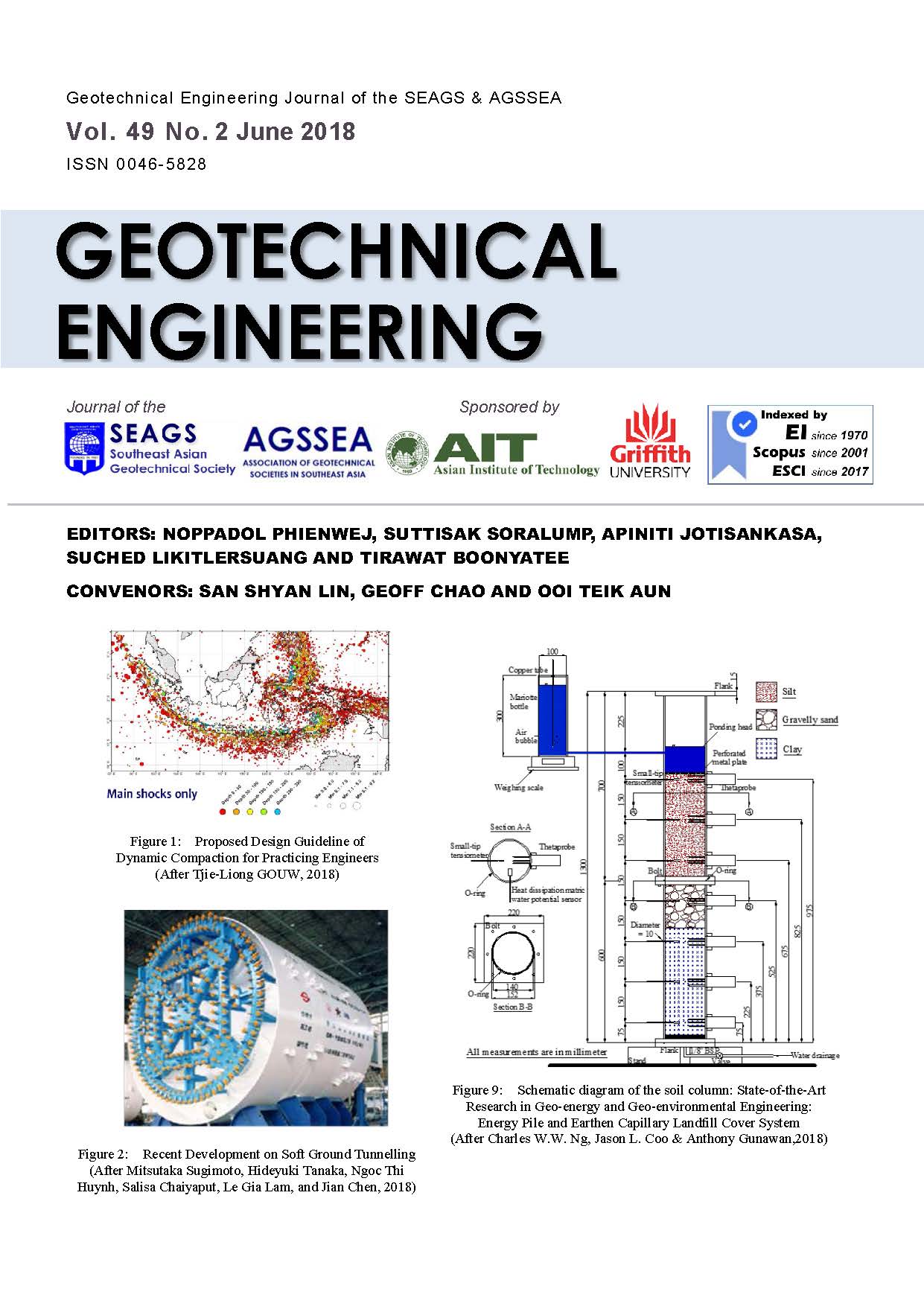Effects of Preloading of Struts on Retaining Structures in Deep Excavations
Main Article Content
Abstract
The performance of an excavation of 19.4 m in depth in soft ground has been reviewed by interpreting the readings of inclinometers in wall of 35 m in length and strain gauges in six levels of struts. Assuming the wall deflections at the first strut level would not move after preloading, the corrected inclinometer readings show that the deflections at the wall toes and at the tips of inclinometers were as much as 43 % and 25 % of the maximum wall deflections respectively. The large toe and tip movements are verified by numerical analyses, which have been conducted to study the effects of preloading of struts as well. The strain gauge readings show that the preloads applied to the struts do not sustain and drop significantly after subsequent preloading of struts. Four cases, namely, struts with full preloads, 50% preload to the first strut level, zero preload and actually observed preloads, have been adopted in the analyses to evaluate the effects of preloads. The results of the numerical analyses using the Mohr-Coulomb model are then compared with the observed wall deflection profiles in the final excavation stages. The Young’s moduli for clay and sand layers have been correlated with the soil strengths. It is found that computed peak strut loads are in agreement with the observed peak loads for the upper 3 levels of struts. For the lower 3 levels, the computed strut loads are however as much as 50% larger than those observed.
Article Details

This work is licensed under a Creative Commons Attribution-NonCommercial-NoDerivatives 4.0 International License.
Copyright © 2019 Association of Geotechnical Societies in Southeast Asia (AGSSEA) - Southeast Asian Geotechnical Society (SEAGS).


